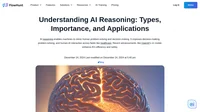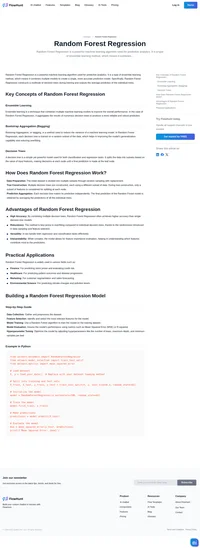Causal inference is a methodological approach used to determine the cause-and-effect relationships between variables. It transcends simple associations to ascertain whether a change in one factor directly induces a change in another. This process is indispensable across various scientific disciplines, including social sciences, epidemiology, and computer science, as it enables researchers to draw conclusions about causal mechanisms rather than mere correlations.
Definition
Causal inference involves identifying the causal relationship between variables rather than merely observing associations. Unlike correlation, which simply measures the degree to which two variables move together, causal inference seeks to establish that one variable directly affects another. This distinction is vital because correlation does not imply causation; two variables may correlate due to a third, unobserved factor, confounding the relationship.
Key Concepts and Methodologies
1. Potential Outcomes Framework
The Potential Outcomes Framework, also referred to as the Rubin Causal Model (RCM), is a foundational concept in causal inference that aids in understanding the causal relationships between treatment and outcome variables within a study. This framework is pivotal in differentiating between mere associations and actual causative factors, allowing researchers to predict what could happen under different scenarios.
In the realm of causal inference, potential outcomes refer to the two possible results that could occur for every individual or unit in a study, contingent upon whether they receive the treatment or not. These outcomes are crucial in determining the causal effect of the treatment. The potential outcomes framework explicitly deals with both observed outcomes and counterfactual outcomes—those that could occur but do not because the treatment was not applied.
2. Randomized Experiments
Randomized experiments, also known as randomized controlled trials (RCTs), are the gold standard for establishing causal relationships in research. These experiments are characterized by the random assignment of subjects to different groups—typically a treatment group and a control group. This randomization is crucial as it ensures that the groups are comparable, thereby eliminating biases and confounding variables that could affect the outcomes.
The power of randomization lies in its ability to ensure that the causal effects are identified non-parametrically. This means that under the potential outcomes framework, the difference in means between the treatment and control groups provides an unbiased estimate of the average treatment effect (ATE).
3. Quasi-experimental Designs
Quasi-experimental designs are a set of methodologies used to infer causal relationships in scenarios where randomized controlled trials (RCTs) are not feasible or ethical. These designs leverage naturally occurring variations or non-randomized interventions to estimate the causal impact of a treatment or policy. They are instrumental in fields where controlled experiments are impractical, such as education, public health, and social sciences.
4. Structural Equation Modeling (SEM)
Structural Equation Modeling (SEM) is a statistical technique that models complex relationships between variables using both observed and unobserved (latent) variables. SEM allows researchers to specify and test models that represent causal processes, often depicted in path diagrams showing directed relationships between variables. SEM is appropriate for both observational data and controlled experiments, providing a versatile tool for causal inference.
5. Causal Graphs and Directed Acyclic Graphs (DAGs)
Causal graphs, including directed acyclic graphs (DAGs), are visual representations of causal assumptions. These graphs help identify the causal pathways and potential confounders, guiding the analysis and interpretation of causal relationships.
6. Instrumental Variables (IV)
Instrumental variables are used when dealing with endogeneity issues in causal inference. An instrumental variable is correlated with the treatment but not with the outcome, except through the treatment. This approach helps isolate the causal effect of the treatment on the outcome.
Applications and Use Cases
Causal inference is applied across various domains such as epidemiology, social sciences, economics, artificial intelligence, and policy evaluation. Each application uses causal inference to understand the impact of interventions, policies, or phenomena, providing insights that guide decision-making and strategic planning.
Challenges and Considerations
Causal inference faces challenges such as confounding variables, spurious correlations, measurement error, and issues of external validity. Researchers must rigorously address these challenges to ensure robust causal conclusions.
Future Directions and Innovations
Recent advancements in causal inference include the development of algorithms and computational methods that integrate causal reasoning into machine learning models. These innovations aim to enhance the capability of AI systems to make decisions based on causal understanding rather than mere correlations.
Understanding AI Reasoning: Types, Importance, and Applications
Explore AI reasoning types, importance, and applications in healthcare and beyond. Discover how AI enhances decision-making and innovation.
Data-backed Content With No Fluff
Create data-driven content with FlowHunt’s AI tools. From idea generation to editing, streamline your process for engaging, SEO-optimized results!



